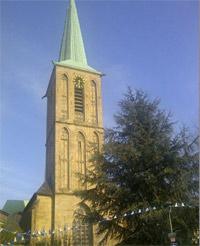Construction Specialties - The Evolution of Architectural Louvre Blades
 Construction Specialties - The Evolution of Architectural Louvre Blades
Construction Specialties - The Evolution of Architectural Louvre Blades
Louvre Blades - External Louvres - Natural Ventilation - Solar Shading
Louvres have been used in various forms for hundreds of years, just look at many churches and similar buildings and you will see large stone or timber louvres.
These are generally simple, single blade arrangements which will often be very deep if they are providing rain defence.
These days there are a variety of louvre systems available offering different blade profiles and with it, different performance characteristics.
Flat "Z" Louvre Blades
Flat Z Blade Louvre are essentially aluminium versions of the early louvre designs, utilising an essentially flat profile. These types of blade usually offer good airflow, but poor rain defence. Which is why they are often used for screening louvre.
Drainable Louvre blades
Drainable blade louvres, were the most commonly used extruded blade type up until the late 1980s. These types of blade tend to give adequate results in light rain, but generally don’t perform well in wind-driven rain conditions.
High Performance Louvre Blades
Finally, there are high performance louvre blades, with integral water collection and drainage.
These louvre blades are designed to prevent wind-driven rain from entering the building, whilst allowing the efficient passage of air.
Air entering the louvre is forced to rapidly change direction creating “low vortex turbulence” and areas of low and high pressure. Water droplets are thrown out into the low pressure areas and drain away through the jambs or mullions, whilst the air carries through the louvre. This process is called tangential separation.
True high performance rain defence louvres have to be able to both collect the water from the air and drain it away. If the water isn’t properly drained away, there is the risk of it cascading down the louvre face and being re-entrained into the airflow.
Design with your building in mind:
It's important to take into account the needs of your building when choosing your architectural louvre system. For areas that require little or no rain defence you're best off choosing a flat blade louvre, but for areas that have expensive plant equipment behind that can't get wet you need a high performance louvre blade system.